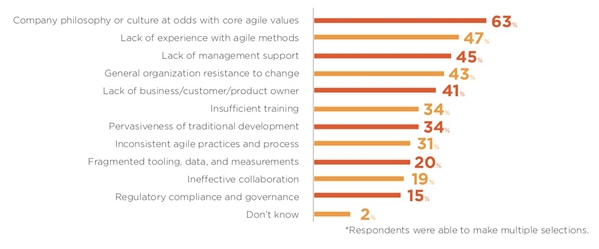
MMS • RSS
Article originally posted on InfoQ. Visit InfoQ
Key Takeaways
- Agile and Scrum frameworks are designed to help teams work together more efficiently. Make sure that everyone understands their roles and that strong leadership is in place to guide everyone through the process.
- Time spent together as a team is precious. Building rapport is crucial for a highly collaborative team environment. A good team needs a bit of down time to build those social bonds.
- Stick to a schedule, streamline the standup, and cover all of the most important topics in a timely manner.
- Identify your team’s strengths and weaknesses and find ways to use them as an advantage to make the team even stronger.
- Encourage communication by sharing knowledge and experience through localized databases.
- Trust your team and encourage self-management; don’t get caught up in controlling every aspect of the project.
Agile and Scrum have been buzzwords in the project management and development world for years now. These approaches have proven time and time again to be a key factor in not just how projects are completed, but how development teams become smarter and more efficient. The truth is that many teams have implemented Agile and Scrum frameworks because they work wonders and can help teams accomplish goals in an organized fashion.
If you are reading this post, you probably know or have an idea of what Agile and Scrum processes are. To reiterate, Agile refers to a group of development methodologies in which outcomes are the result of collaboration between self-organization and cross-functional teamwork.
Scrum is a process that falls under the umbrella of Agile. It is a set of practices that must be followed in a particular formula with certain roles of the team defined. There are three key roles in a Scrum team:
- Product Owner – The head stakeholder who conveys the overall vision and objectives of the project. The Product Owner is the one accountable for managing the backlog and accepting the completed increments of work.
- The ScrumMaster – Works directly with the Product Owner but holds no hierarchy over the rest of the team. The ScrumMaster is responsible for making sure the principles of the Scrum theory are carried out and the team is working at the highest efficiency.
- The Development Team – The self-organizing, cross-functional group producing the deliverables. This team includes anyone participating in the creation process of the product. There are no titles in the Development Team.
The series of 5 Scrum events involves:
- Sprint Planning
- Daily Scrum
- Sprint Review
- Sprint Retrospect
- The Sprint
According to last year’s Pulse of the Profession survey, conducted by PMI, nearly 71% of organizations report using Agile tactics within their organization. This can likely be attributed to the notion that Agile methods generally produce a disciplined process that thrives on in-depth examination, collaborative thinking, and constant refinement. While the concepts in the famous Agile Manifesto seem relatively straightforward, being at the helm and carrying out this leadership philosophy from A to Z is no simple task.
No matter what your Agile team looks like or how you plan to integrate these principles into your strategy, there is one factor that must remain constant: strong leadership. Taking the reigns as an Agile or Scrum leader is an important task. As you prepare to take charge, there are some key principles to keep in mind that will help to ensure everything goes as planned.
Let’s discuss.
1. Streamline the Meetings
When implementing the Scrum strategy to a team, one of the most important steps is hosting the daily Scrum event. According to the State of Agile report, 90% of Scrum teams hold these meetings every day, making it the most commonly implemented Agile framework.
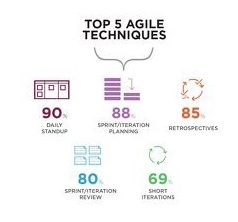
These tend to be quick get-togethers (The Scrum Organization recommends a 15-minute limit) typically held first thing in the morning with the entire team present in order to talk about the day’s goals, next steps, and any issues that need to be addressed. Many teams call this the Daily Stand-up because they have found teams have a better focus and pay attention when they remain standing.
This meeting is a time to synchronize and draw up a battle plan for the next twenty-four hours. The Development team leads these meetings, so they are in charge of going over the goals for the day ahead and ensuring that everyone knows their roles, tasks, and objectives. Team members are encouraged to ask questions during this part of the meeting to make sure that they are all on the same page.
Now, that sounds like a fairly short list to accomplish, but these meetings can certainly run the risk of dragging out longer than necessary. As a leader in this regard, it is up to you to keep everyone focused on the task at hand. In order to do this, everyone must understand why each part of the meeting is important.
Apart from Daily Stand-ups, your team will also hold meetings once a Sprint is completed. This Sprint Review Meeting is important to keep your team on track and focused on the vision of the entire project. There are three key parts of the Spring Review Meeting which include:
- Retrospective: This is the time that teams should reflect on what worked well during the last Sprint and what did not.
- Battle Plan: Teams should decide what needs to happen next during the upcoming Sprint and delegate tasks appropriately.
- Solution Stage: This is the time for teams to share their ideas for solving recurring issues that happened during the last Sprint. Teams are encouraged to talk about any problems they ran into and share their ideas for resolution.
Now, that’s a lot to accomplish, which is why these Sprint Review Meetings can certainly run long if leaders don’t keep the team in check and on task. By understanding why each part of the meeting is held and what needs to happen during those times can help.
First of all, the retrospective period is essential. Unfortunately, many teams skip over this step or spend far too little time reflecting on the past Sprint, which weakens the influence it can have on a team’s success. Even a mediocre retrospective can have an adverse effect and easily turn into a time of complaining and making excuses for lazy behavior. Instead, this time should be an open but professional conversation regarding struggles or obstacles. This is not a time to point blame; instead the goal should be to get to the root of the problem. Ask the team if there were any communication issues, misunderstandings, or unexpected changes. By shifting the perspective and looking at the core issues, the retrospective aspect can be strengthened and become far more effective.
Secondly, the battle plan stage must be straightforward and to the point. As a general rule, teams should have a Scrum board that organizes projects into small steps that need to be accomplished in a certain order. Whether this is a physical board or an online one is up to the team’s preferences, but some visual representation is certainly necessary. Be sure that everyone is looking at the board to see which tasks are moved to the next phase.
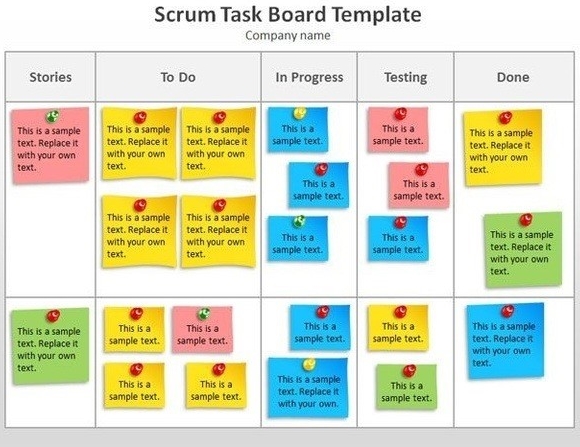
Finally, be sure to focus on the solution stage, but don’t drag it out. Since you’ve already determined the core of the issues during the retrospective, the solutions should hopefully be clear and easy to find. Moreover, there should be actionable ways to implement them. Rather than say “we need to communicate better”, an actionable solution would be, “meet up with your team leader once a day to make sure you’re on track and any questions are answered’.
While it is certainly tempting to make the daily meeting a time to chat around the water cooler, it is important to stick to a plan and make the most of your team’s time. Try to keep small talk to a minimum, cover these three important steps, and streamline the process as much as possible.
2. Be Upfront about the Strengths and Weaknesses of the Team
One of the key principles of the Agile framework is to work as a team and find systems that make everyone more successful. Chances are, a great team won’t come together by coincidence; teams are made up of individuals who have their own strengths, weaknesses, and personalities. The key to creating a strong Scrum team is to be honest and upfront about these qualities rather than skirting around the issue(s).
Creating an environment of psychological safety is imperative for a high-performing team. Google conducted a two-year long study on team collaboration and found that when individuals felt that they could share their honest opinions without fear of backlash, they performed far better. When employees feel that their opinions matter, their engagement levels peak and, according to Gallup’s research, their productivity increases by an average of 12%.
But unfortunately, this doesn’t always happen, especially when teams are new to Agile and Scrum. The Agile Report found that one of the top challenges reported while adopting an Agile approach was its alignment to cultural philosophy, along with lack of leadership support and troubles with collaboration. All of these issues are related to people’s personalities, including their strong points and areas of weakness. If a strong leader is put in place and a strategy is designed to work to each member’s strength, many of these problems can diminish.
[Click on the image to enlarge it]
First of all, you must choose your leadership wisely. For instance, the Scrum Master is often chosen because they are a person who understands the principles and Agile Manifesto so they are able to keep the team accountable. Due to Scrum teams being self-organized and self-managed, they should appoint the Scrum Master together. This person must be a good leader, but they also need to know their place. Scrum Masters have no more authority than anyone on the team, and they are often referred to as a servant leader who is there to help the rest of the team and provide support whenever needed. Therefore, the person who fills this role must be able to communicate the principles and keep everyone in check without overstepping. It is also interesting to note that the Scrum Master is not a concrete role; it is fulfilled by the person who is best equipped for the job during a specific point in time. As things change, the person who would be best for this important role may as well.
When appointing leadership among the team, it may be helpful to think of it as a job interview. Look at their past performance as a resume. Will their strengths support the team or will their weaknesses stand in the way of success?
Secondly, facilitate open conversations within the team about these areas. Compliment and comment on jobs well done; don’t berate people for their weaknesses, but help them find ways to improve and develop their skills.
There’s no need to keep people’s strengths and weaknesses a secret. Instead, by being honest and straightforward about them, it will be easier to identify ways to use them for the team’s advantage.
3. Leverage the Shared Pool of Knowledge
The goal of Agile is to create an environment where a team can work together seamlessly. There are four core values of the Agile Manifesto:
- To value individuals and interactions over processes and tools.
- To value working software over comprehensive documentation.
- To value customer collaboration over contract negotiation.
- To value responding to change over following a plan.
In other words, an Agile team must value each other and interactions with the entire stakeholder community over sticking to a strict schedule and getting so wrapped up in minute details that they lose sight of the bigger picture.
In order to stick to these values and ensure that the job is done correctly and efficiently, there must be systems in place to create a network of shared information. For some teams, an Excel spreadsheet may be enough; for others, a white board can work. And for others, a virtual dashboard might be necessary for organization.
Since 71% of all organizations use Agile approaches for team projects (at least occasionally), there are plenty of online resources available to help your team leverage their pool of knowledge. Using a project management system that is designed for Scrum teams specifically can be quite useful for keeping documents and information located in a single program for easy access. These tools often include virtual Scrum boards for task assignments to make sure everybody on the team is on track to hit their deadlines. In fact, one report found that teams who utilized project management software reported improvements in team communication, as well as the overall quality of their end product.
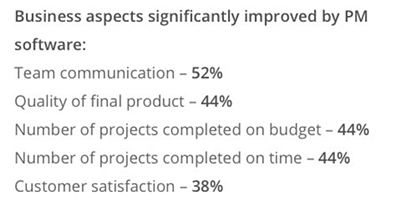
Of course, not all of this knowledge will be virtual. Each person on the team brings their own set of skills and experience to the table; be sure to utilize their gifts during team meetings by listening to their opinions and insight. Always encourage communication, specifically face-to-face (another Agile principle), to share this vast resource of personal knowledge.
4. Add a Buffer Zone (Avoid Micromanaging)
According to the Agile Manifesto, there are several key principles that teams must hold to in order for success. As the Manifesto puts it:
Business people and developers must work together daily throughout the project. Build projects around motivated individuals. Give them the environment and support they need and trust them to get the job done.
Clearly, this principle leaves no room for micromanagement. In fact, the point of a Scrum team is that it is self-sufficient and self-managing. While a team leader is appointed to ensure that deadlines are met and a Scrum Master is chosen to make sure that Agile principles are followed, teams should be fairly independent.
Of course, this may be quite difficult for a leader to accept, especially if there is little trust between team members.
The Agile approach offers a safe balance between micro-management and self-sufficiency. In some ways, Agile has some micro-management influence. For example, hosting daily meetings to go over what everyone did and what is next on the to-do list might seem like overkill for a usual team project. For Scrum teams, this is highly encouraged. However, the bulk of what defines Agile revolves around self-governing and holding team members accountable for what they do throughout a project.
The goal of Agile is to create self-organized teams who are able to manage themselves. Therefore, management should be far more focused on leadership and guidance than telling the team what to do.
If you find that it is difficult for you as a leader to find this balance, it may be helpful for you to look into Scrum certification. There are many online certification courses available that will help you to understand the practical application of Agile and Scrum principles – so you are able to integrate them more effectively. In fact, 81% of people who received Scrum certification reported that it significantly improved their practices.
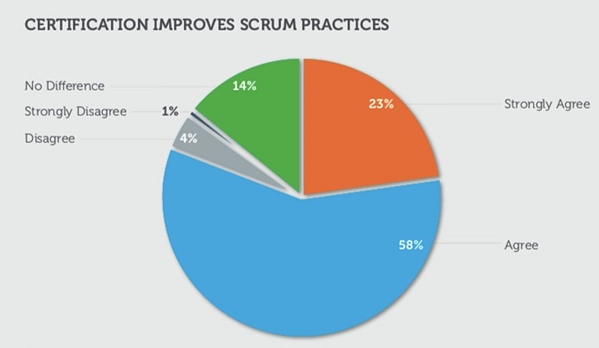
Scrum teams must be built on a foundation of trust and understanding. A micromanager is not typically able to trust their team members, but a true leader must be able to. This trust may need to be built over time but increasing your knowledge and experience with Scrum and Agile can help you gain more confidence and help you better guide your team.
Conclusion
Taking charge as a leader in an Agile project with a Scrum team is an important undertaking. While the goal is to establish a self-managing, independent Scrum team, leadership is still necessary (especially at first) to ensure that the team is able to stick to Agile principles and get the project accomplished. By setting these goals and following these guidelines, you can ensure that your development team will be able to reach its fullest potential.
About the Author
 Manish Dudharejia is the President and Founder of E2M Solutions Inc, a San Diego Based Digital Agency that specializes in Website Design & Development and eCommerce SEO. With over 10 years of experience in the Technology and Digital Marketing industry, Manish is passionate about helping online businesses to take their branding to the next level.
Manish Dudharejia is the President and Founder of E2M Solutions Inc, a San Diego Based Digital Agency that specializes in Website Design & Development and eCommerce SEO. With over 10 years of experience in the Technology and Digital Marketing industry, Manish is passionate about helping online businesses to take their branding to the next level.
